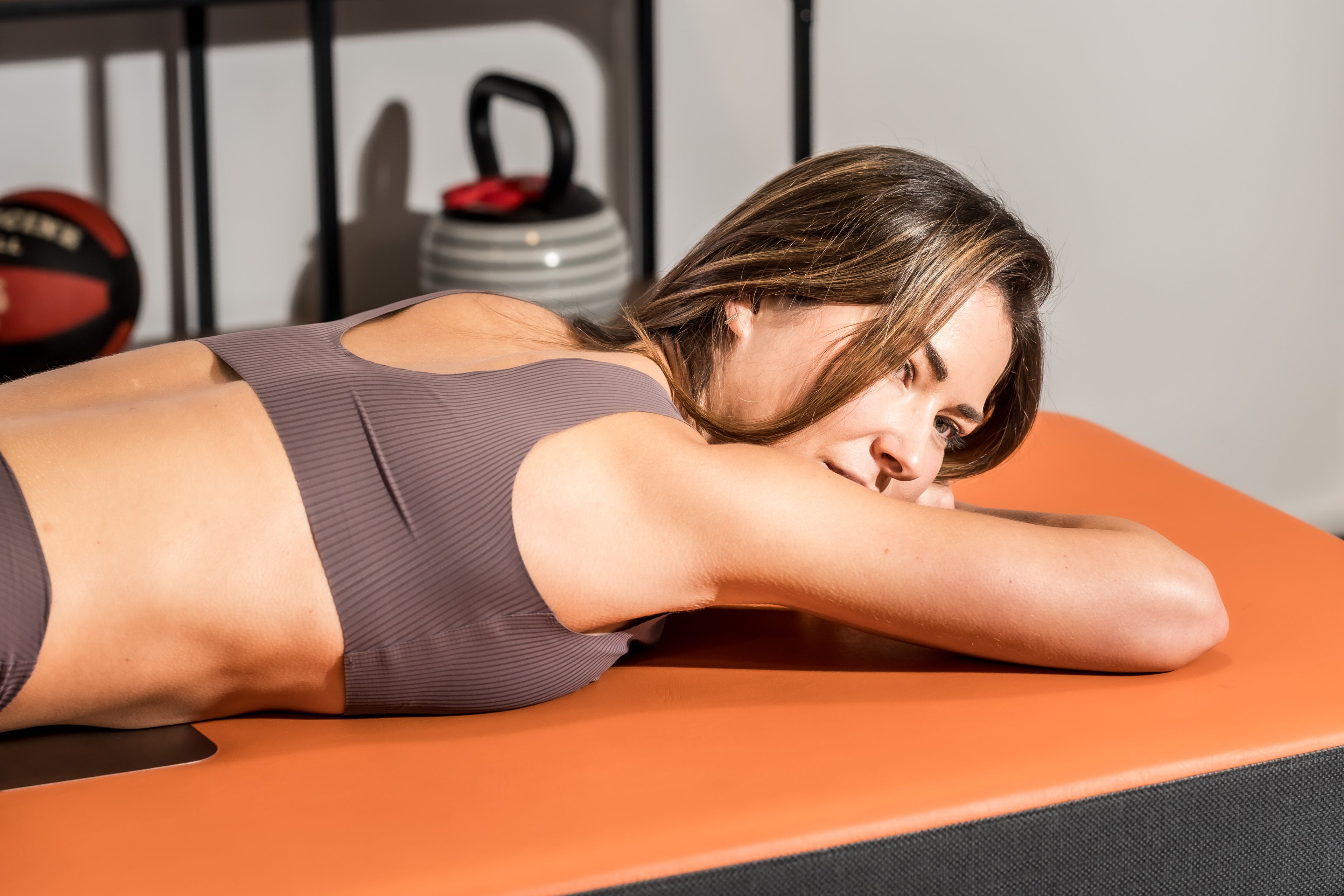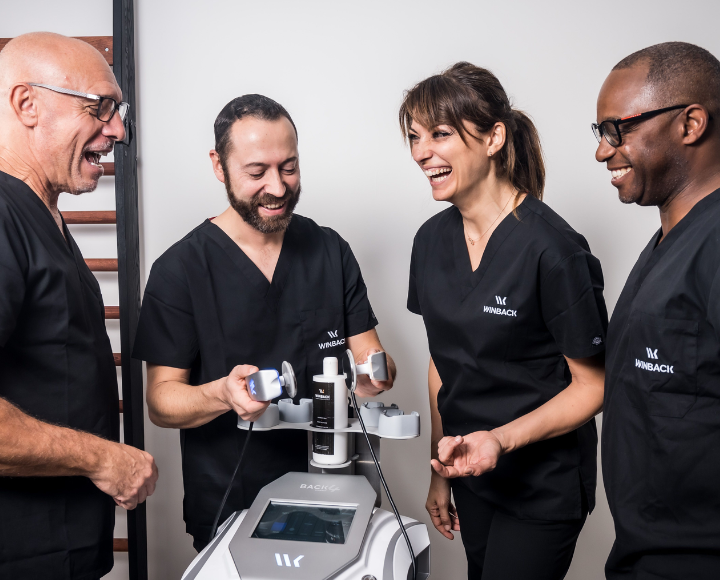Pain, migraines & mobility of the cervical vertebrae with Winback tecartherapy
Pain, migraines & mobility of the cervical vertebrae with Winback tecartherapy
CONTEXT
The active trigger points in the suboccipital region are involved in tension headaches, with an increase in their local sensitivity and their referred pain.
AIM
This study aims to determine whether the association of high frequency current applied to the suboccipital zone with muscular relaxation is more effective than suboccipital muscular relaxation only in the treatment of tension headaches.
METHOD
30 patients were divided into 3 groups of 10 patients.
EG-1 : stretching of suboccipital muscles combined with Winback high frequency current (frequency 0.3 Mhz and resistive electrode)
EG-2 : stretching of suboccipital muscles only. CG: control group without treatment. The evaluation tools used were HIT-6 (headache impact test 6), pain in the suboccipital muscles when put under pressure, the neck disability index and the mobility of the cervical vertebrae.
The sessions lasted 10 minutes, twice a week for 4 weeks, and the evaluation measurements were taken after each session.
RESULTS WITH WINBACK TECAR THERAPY
Comparing the groups after the sessions and the degree of progress from before to after the session shows a significant difference for all of the parameters with a value of p<0.05, except for lateral tilts of the cervical vertebrae.
For post-treatment measures, the EG-1 group showed significant differences for all of the parameters compared with the control group. However, there was no difference between the EG-2 group and the control group in muscular tension pressure in either of the two temporal areas. Moreover, the HIT-6 and the pressure threshold for pain in the right temporal area showed significant differences between the EG-1 and EG-2 groups. For the first two groups, EG-1 and EG- 2, the difference between before and after treatment seems significant (p>0.05), except for pain in the right temporal region when pressed which is only significant in EG-1.
DISCUSSION
The study analysed patients with chronic migraines relating to the trigger points of suboccipital muscles who underwent Winback treatment. It shows the value of the manual therapy provided by physiotherapists. Winback makes its contribution by acting alongside the physiotherapist’s manual treatment, undeniably improving its performance.
Winback can make treatment more effective on the pain perception threshold and the tissue quality, and also improve cervical mobility thanks to the increase in local temperature which allows greater stretching tension on the tissues without damaging them.
Our study has opened up a wide field of investigation, as part of which we need to verify these results with a larger group of patients. The progress this study has made is encouraging, and deserves the close attention of the medical community for the surprising speed with which patients become more comfortable. It therefore represents an alternative solution to pharmaceutical treatments.
CONCLUSION
These results show that techniques to relax the suboccipital muscles can be beneficial in treating headaches and tension headaches and in improving mobility of the cervical vertebrae, and that the benefit can be increased by using high frequency current. As high frequency current is safe and easy to use, it would be interesting to conduct other studies combining it with other manual therapy techniques.
Those posts may also interest you


